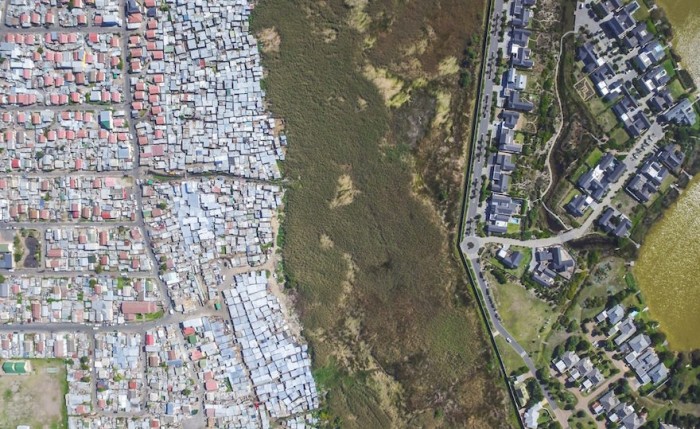Part of the Project
The city of Pontevedra in Spain is designed for walking. Described as a city without cars, policies implemented since 1999 – street maps and walking routes – have made sure that 90 per cent of the city caters specifically to pedestrians, increasing livability substantially.
In Singapore, the PubliCity city regeneration programme takes underutilised public space and turns them into places that make communities more livable. They do it by relying on community expertise and creativity to identify unused areas and find a purpose for them.
In Cairo, architect Omar Nagati is turning derelict alleyways into communal centres which are then used to bridge the gap between Downtown Cairo’s formal and informal building and transport structures, connecting the area’s people.
All of these examples and more speak to the fact that all over the world, people are trying to design cities differently. We’re designing them to account for the fact that sprawl – the model used in the majority of city planning – isolates people by perpetuating economic and social inequality, is detrimental to the environment, and does nothing to promote a connected, healthy, and safe way of life.
Walking or the walkability of a city was pegged as a potential solution to sprawl even before urban planner Jeff Speck published his book on the walkable city in 2012. Now, according to a new report by urban planning and design firm Arup, it’s in our benefit to keep moving in this direction, one foot in front of the other.
But most cities still prioritise cars and traffic above all else. “The legacies of the traffic-dominated planning era are still clearly visible in cities worldwide. We can see this in neighbourhoods without sidewalks, in public spaces made redundant by parked vehicles, and in the urban highways that segregate neighbourhoods in order to serve sprawling suburbs,” reads the report.
The disadvantages of a traffic-led approach to city design are manifold. Vehicles are still mostly dependent on non-renewable fuels, and they’re a major contributor to air and noise pollution. Speed is the main cause of premature deaths and injuries in road accidents, and traffic congestion is a huge cost on the city and on the soul.
At the same time, a heavy reliance on vehicles for transportation contributes to the decline of physical activity and the rise of obesity, while sprawl may lead to social isolation and disconnected communities. So how do we go about changing this deeply ingrained way of living and building?
It starts with taking it back to basics: walking. “Designing walkable cities enables us to start with the street – the essence of the city,” explains Arup’s associate director Dan Hill.
“In doing so, it leads to systemic changes that scale up to all the outcomes we might desire of a city, such as an engaged and open civic life, a diversity of social interactions, a thriving local economy, a clean, green low-carbon environment, and so on. So in a way, walkability becomes one of the keys to the good city’s future.”
But in a city like Cape Town, a central business district designed to promote walking isn’t enough. Because of the country’s apartheid spatial planning legacy, the poor live on the periphery of the city and even further away, separated from income opportunities, healthcare and more by buffer zones of land, bush, or infrastructure.

See more photos of Cape Town by photographer Jonny Miller.
According to Professor Beck Loo from the University of Hong Kong, to address Cape Town’s kind of density it’s crucial that walkability be paired with with a well-considered transit strategy that takes into account income, environment, population size and economic activity.
“A sustainable mobility strategy for mega cities will not be suitable for low-density cities with substantial suburban sprawl. The key ideas are to ensure synergy of walkability with other transport policies, allow local participation and ensure a system of good governance,” she explains drawing on Hong Kong’s Discovery Bay, a car-free community with a population size of over 12,000 people. She says that this example shows that cities will remain “melting pots” for different innovative sustainable transport ideas to coexist.
Innovators like Tiffany Chu make a case for the same solution. Her company Remix has gamified transit planning by creating a interface that allows city planners to easily test and choose new transit routes using a drag and drop feature. The tool simplifies the planning process, allowing stakeholders to easily see the benefits of projects such as Rapid Bus Transit routes.
Speaking to Design Indaba last year, ahead of our own city planning capsule Design Commons, Chu said it boils down to a battle of space. There must be a will to integrate the haves and the have-nots if we’re to make the cities of our futures sustainable. Strategies like mixed-use spaces, integrated social housing and effective transit routes all contribute to the walkable city.
“A lot of the voices in the conversation are very selfish in the way that their cities are planned because everyone wants to protect their own property values,” she said. “People think buses are for poor people so they don’t want buses going by next to their house because it’s noisy and we need to have a conversation around how do we make the city better as a whole, for everybody instead of just for specific groups of privileged people.”








